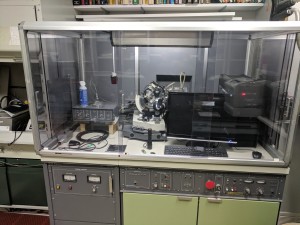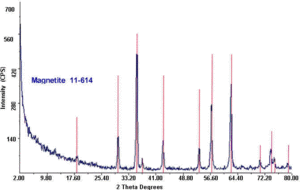X-Ray Diffraction
Description of Technique

x-ray diffraction
X-ray diffraction (XRD) takes advantages of the coherent scattering of x-rays by polycrystalline materials to obtain a wide range of structural information. The x-rays are scattered by each set of lattice planes at a characteristic angle, and the scattered intensity is a function of the atoms which occupy those planes. The scattering from all the different sets of planes results in a pattern which is unique to a given compound. In addition, distortions in the lattice planes due to stress, solid solution, or other effects can be measured. An additional advantage of XRD is that it is a non-destructive technique, and that there are no requirements on the sample other than its surface be planar and that it be polycrystalline.

XRD
- Both quantitative and qualitative data can be obtained. Quantitative analysis requires that the customer supply reference standards of the individual constituents in the mixture.
- Inorganic compounds which have known reference patterns. Limited capabilities for structure determination of compounds whose crystal structure is unknown.
- Degree of preferred orientation of textured materials
- Residual Stress
- Average crystallite size can be measured for materials whose average crystallite size is less than 300mm
- Degree of crystallinity can be quantified for materials which are only partially crystalline